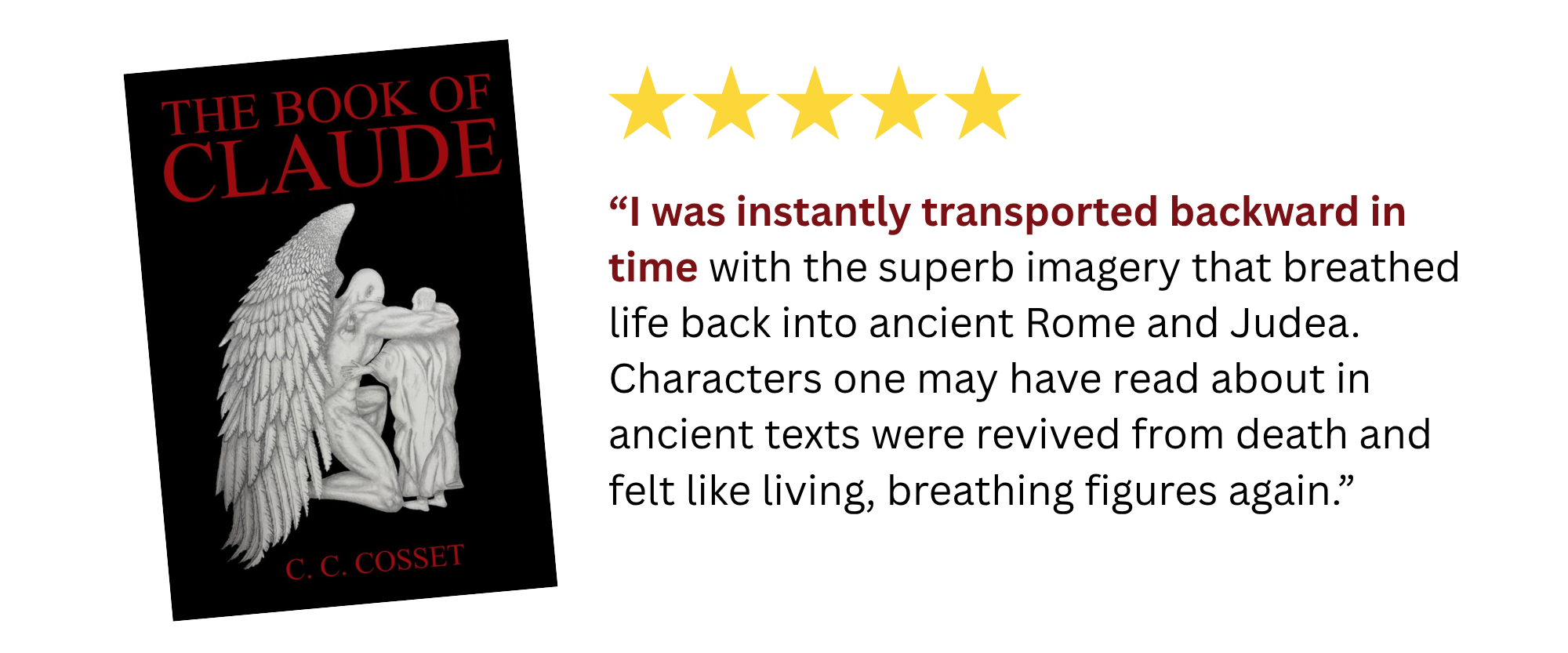Congratulations to C. C. Cosset on the publication of your amazing novel! Thank you for trusting Neon Loon to edit your epic book. Our team is thrilled at your early publication success!
If you haven’t yet, we encourage you to pick up a copy. Distributors can order in bulk via Ingram Spark.

Description for The Book of Claude:
In 1946, just outside the ancient village of Qumran, a young shepherd boy counted a small herd of goats left in his care. Having become distracted by the ruins of the Essene village, the boy discovered he was one goat short. He wandered through the hills nearby, but the caves were too numerous to search. Instead, he threw rocks into them as he walked by, hoping to startle his deviant goat out of hiding. Rather than the click and clack of rock striking rock, his last projectile caused a curious crash. When the young goat herder crawled into the cave to investigate, he stumbled upon the greatest archaeological discovery in the history of mankind.
What the goat herder found was a clay pot, a vessel to a papyrus scroll weakened from centuries of arid climate and intolerable heat. The linen thoughtfully wrapped around the scroll was the last defense against the unforgiving natural decay of time. He carefully unfurled the scroll to find lines of Hebrew text inked onto the papyrus. As his eyes searched the rest of the cave, he determined there must be hundreds of these scrolls placed inside more clay jars and stacked in undisturbed piles. The shepherd boy may not have been educated in the value of lost antiquities, but he knew one thing for certain: The artifacts that lay around him were genuinely precious.
Forgetting about his responsibility to the goats, the shepherd boy rushed to show the scroll to his brother. The excited pair brought his find to an antiquities dealer in Bethlehem who offered the boys peanuts for their treasure. The antiquities dealer then consulted a local professor about this ancient artifact. When the professor examined the scroll, his hands began to tremble with excitement, for this scroll was a copy of the Book of Isaiah, only it pre-dated the oldest version of the Bible by nearly one thousand years.
Returning to the site, the professor discovered eleven more caves containing thousands more scrolls and even more scroll fragments submitting to the dust under which they were buried. This ancient Essene village lay on the banks of Lake Asphaltites, a lake devoid of life due to its copious salt content. The lake was aptly named The Dead Sea.
For all the advances science has made since their discovery, the origin of the Dead Sea Scrolls, their authors, and how they came to their final resting place remain a mystery. To discover this, one must look back upon the histories of the ancient Jewish civilization that inhabited these lands nearly two thousand years prior, during their first revolt against a Roman Empire that had spread its influence across three continents. That is when this story began. The following is a true story based on the ancient histories the scholars of its time recorded.







